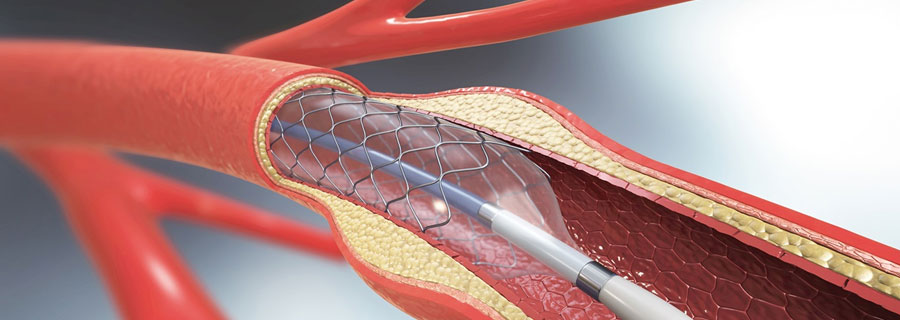Catheter Based Angioplasty and Stenting

Catheter-based angioplasty and stenting are minimally invasive procedures used to treat narrowed or blocked blood vessels, typically arteries, in a medical condition known as arterial stenosis. These procedures are commonly performed in various parts of the body, including the heart (coronary arteries), legs (peripheral arteries), neck (carotid arteries), and kidneys (renal arteries).
Catheter-based angioplasty and stenting involve the use of a catheter, which is a thin, flexible tube, and are performed as follows:
- Angioplasty:
During angioplasty, the catheter is inserted into the blood vessel, typically through a small incision in the groin area (femoral artery) or sometimes through the wrist (radial artery). The catheter is then carefully advanced through the vascular system, guided by fluoroscopy (real-time X-ray imaging), to the location of the narrowed or blocked artery.
- Stenting:
In some cases, after angioplasty, a stent is used to help keep the artery open and prevent it from narrowing again. A stent is a small, metal mesh-like tube that is mounted on a balloon-tipped catheter. The stent is placed at the site of the previous stenosis and then expanded by inflating the balloon. As the balloon expands, it pushes the stent into position, where it stays in place to hold the artery open. The balloon is deflated, and the catheter is removed, leaving the stent in place to support the arterial wall.
Benefits of Catheter-Based Angioplasty and Stenting:
- Minimally Invasive: These procedures are less invasive than traditional open surgery, as they require only a small incision and do not necessitate large surgical openings.
- Shorter Recovery Time: Patients generally experience shorter hospital stays and quicker recovery periods compared to open surgical procedures.
- Improved Blood Flow: Angioplasty and stenting effectively restore blood flow to the affected artery, alleviating symptoms and reducing the risk of complications.
